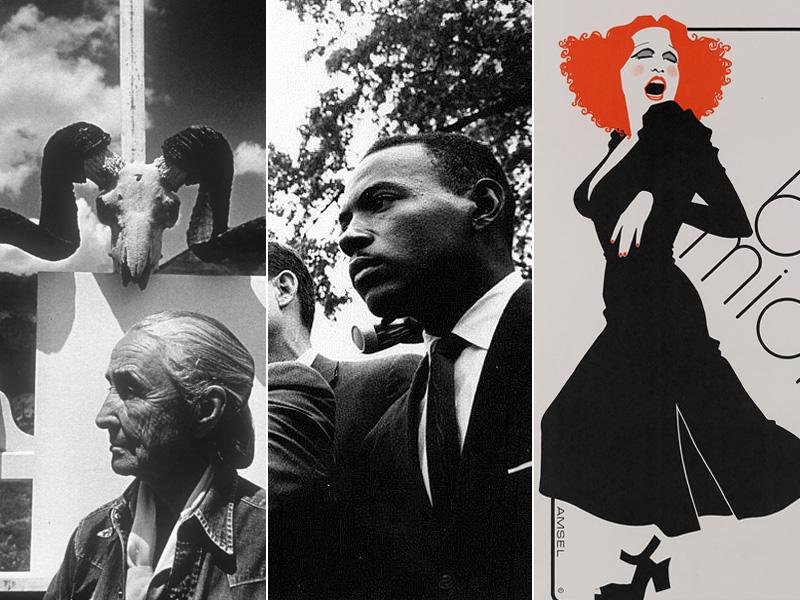About six weeks ago–and I missed it–the National Portrait Gallery started a crowd-sourcing initiative called Recognize that pitted three works in the collection against one another and asked the public to choose one. The other day, the Washington Post raised questions about it–appropriately, I think. The whole exercise seemed, my words not the Post’s, like a stunt in search of a mission.
Let’s  begin with the NPG’s description:
This November, the National Portrait Gallery will unveil a special crowdsourced wall in our galleries, called “Recognize,†as a place to highlight an important person in our collection. Every few months we will announce a new lineup of candidates for consideration and invite the public to vote on which one will be featured on the “Recognize†wall.
The first three choices:
James Meredith became the first African American student at the University of Mississippi. His admission to “Ole Miss†in 1962 was a flashpoint in the civil rights movement.
Georgia O’Keeffe became one of the most dynamic and compelling artists of the twentieth century, known for both her large-scale paintings of detailed, magnified flowers and her kinetic cityscapes.
Bette Midler has earned many accolades for her various musical, theatrical, film, and television performances, including three Grammy Awards, three Golden Globe Awards, three Emmy Awards, a special Tony Award, and two Academy Award nominations.
 On what criteria were people to be voting? “Who will be recognized at the National Portrait Gallery for his or her contributions to American culture?’ And mention about the merits of the twp photographs and one poster in contention? Nope.
On what criteria were people to be voting? “Who will be recognized at the National Portrait Gallery for his or her contributions to American culture?’ And mention about the merits of the twp photographs and one poster in contention? Nope.
And, asked the Post, “Why these three seemingly disparate images?”
Interestingly, the blog post announcing the “contest” did not evoke a single comment. Two weeks later, in another blog post, the NPG announced the “winner.”
Of these three outstanding contenders, Georgia O’Keeffe received 43 percent of the votes, and so Arnold Newman’s portrait of her will appear on the Recognizewall in early November! The installation will be announced here.
The NPG did not say how many voted, but nevertheless declared the experiment a success (the Post said 3,829 votes were cast). As to the Post’s question about why these three images were chosen, the NPG offered “connective tissue” that was “Kleenex thin”:
Each had an anniversary during the time of the project, although none is a milestone. O’Keeffe’s 127th birthday would have been Nov. 15 (she was born in 1887) and Midler turns 69 on Dec. 1. Meredith became the first African American student at the University of Mississippi — a significant event in the civil rights movement — on Oct. 1, 1962, 52 years ago.
There’s no real harm in doing this kind of thing (except for the opportunity costs), but it just seems like a real stretch, a cheap stunt to “engage” more people. But the NPG’s answers to the these questions make it look rather desperate for “engagement.” Nothing drives people away more than desperation.
Photo Credit: Courtesy of the National Portrait Gallery
